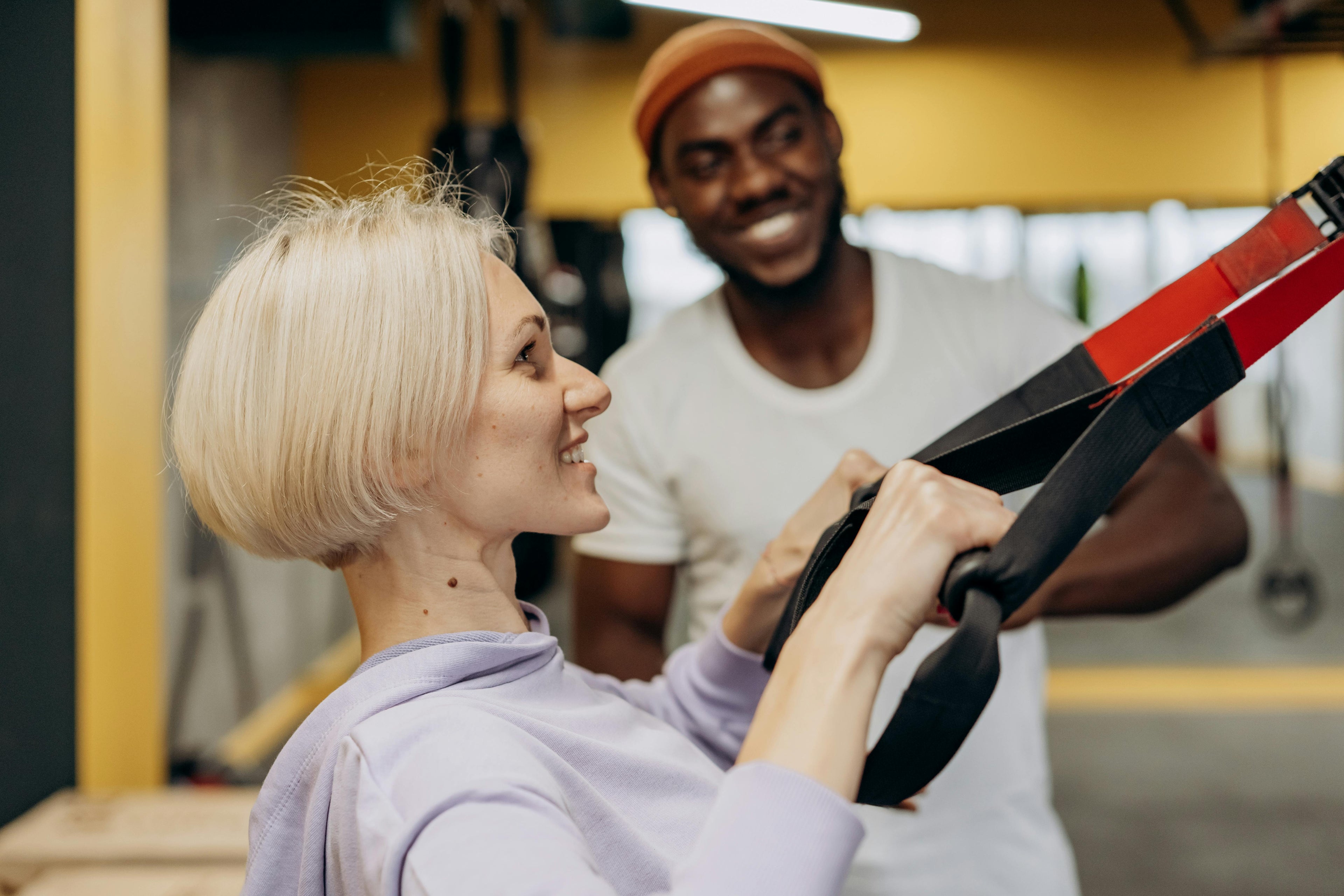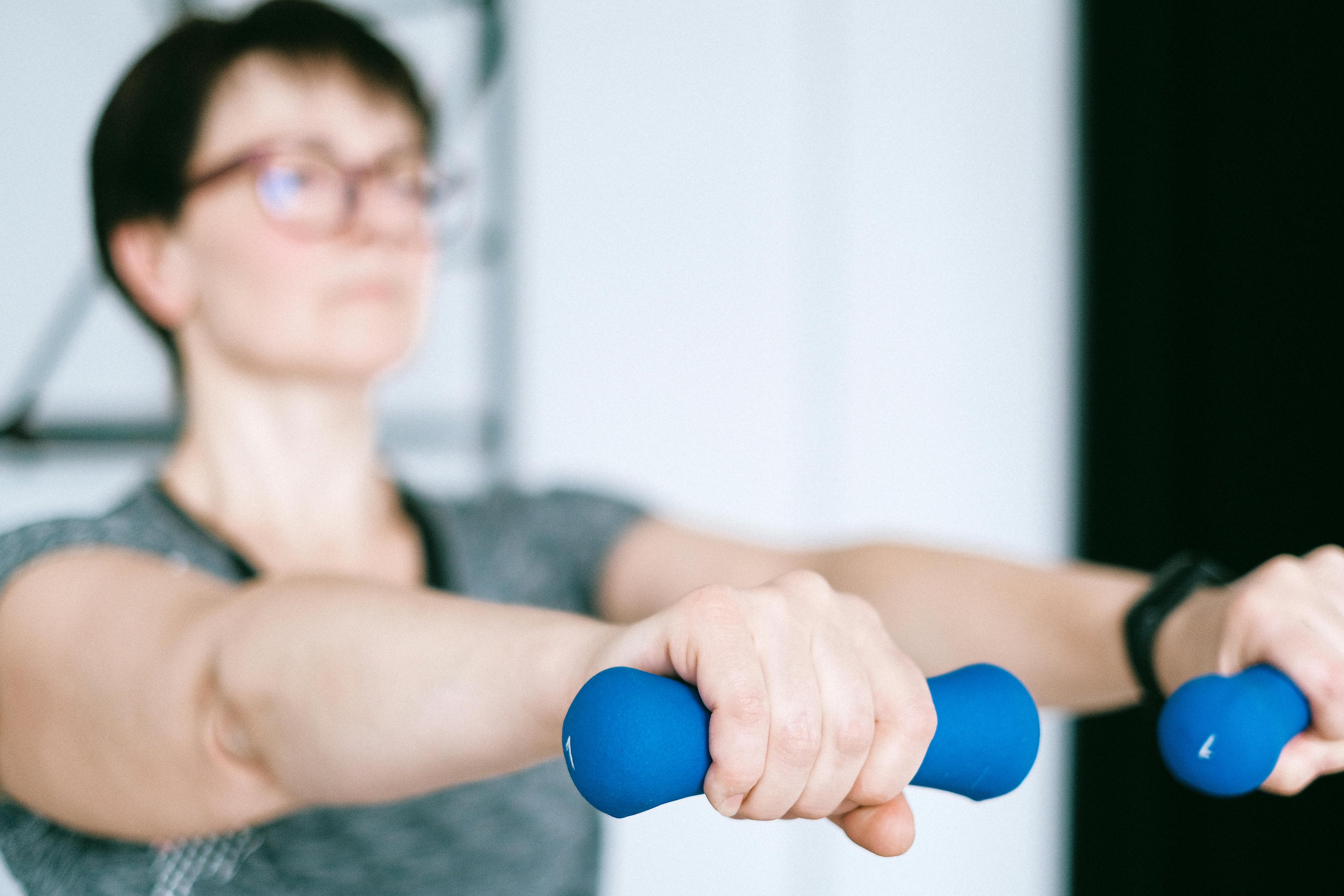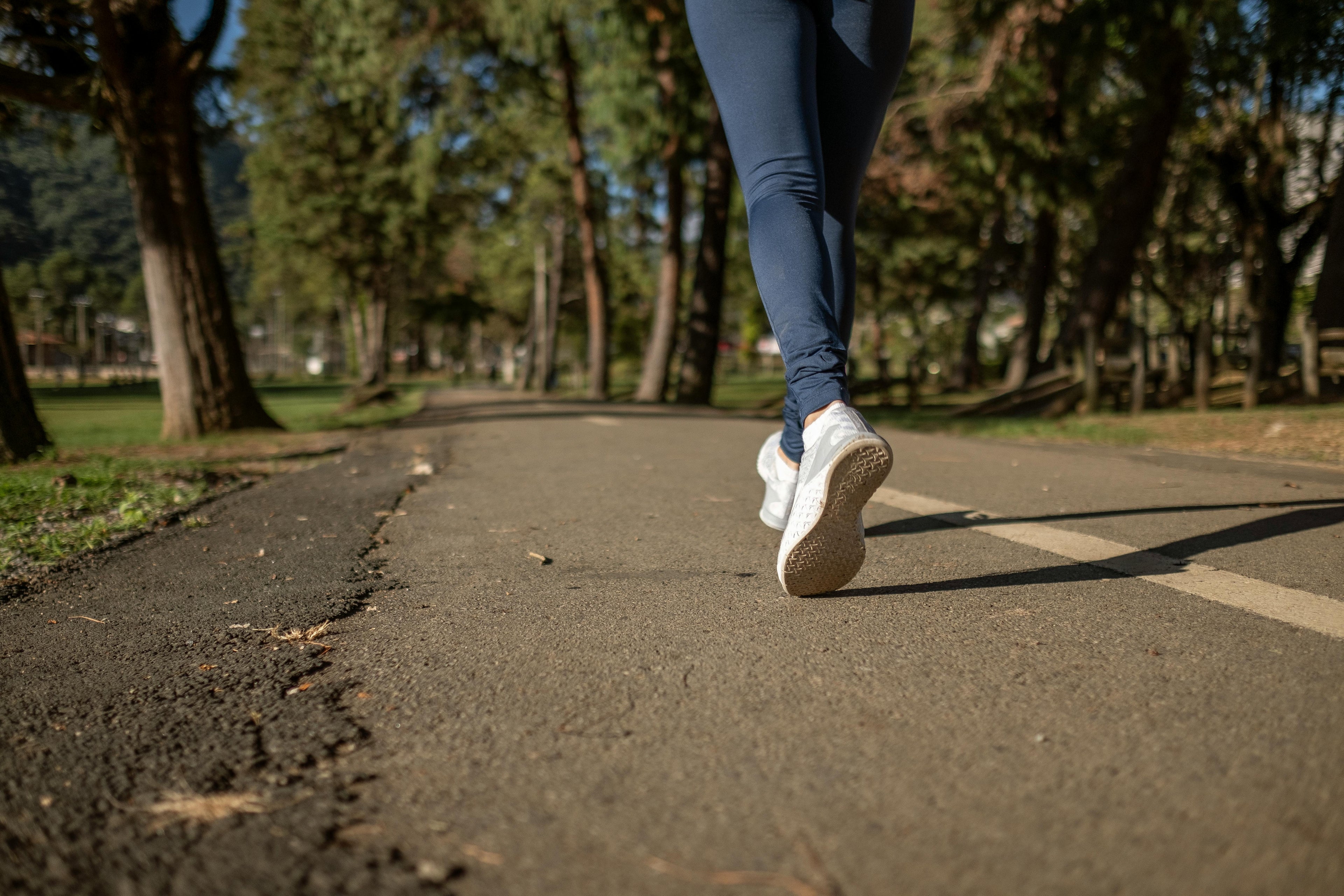Menopause often feels like your body is rewriting its rulebook. The changes can be subtle at first—like a little extra stiffness or a shift in your energy levels. Over time, they become harder to ignore: bones feel more fragile, muscles seem weaker, and concerns about long-term health creep in.
What if there were a way to fight back against these changes, not just to maintain your health but to thrive? Resistance training, often overlooked by women, is one of the most effective ways to support your body during menopause. It strengthens muscles, fortifies bones, and lowers your risk of osteoporosis. Most importantly, it gives you the tools to age with strength and confidence.
In this article, you’ll learn how menopause impacts your body, why resistance training is a game-changer, and how you can start building a sustainable exercise routine today.
Why Menopause Changes Your Body

Menopause marks a significant shift in your body's chemistry, driven largely by the decline in oestrogen levels. While this hormone is commonly associated with reproductive health, it also plays a crucial role in maintaining muscle mass and bone density.
Here’s what happens:
- Loss of Bone Density: Oestrogen helps regulate the balance between bone formation and breakdown. As levels drop, the body loses bone faster than it can replace it, increasing the risk of osteoporosis.
- Reduction in Muscle Mass: Known as sarcopenia, the gradual loss of muscle mass is a natural part of ageing, but it accelerates during menopause. This can lead to reduced strength and mobility.
- Joint Stiffness and Pain: Hormonal changes can also affect joint health, leading to discomfort or stiffness that might make physical activity feel daunting.
These changes can feel like an uphill battle, but they don’t have to define your experience. Resistance training is a powerful tool for counteracting these effects and reclaiming your strength.
The Science Behind Resistance Training
Resistance training, also known as strength training, is more than just lifting weights at the gym. It’s a targeted way to build and maintain muscle mass, strengthen bones, and improve overall function, all of which are critical during menopause. Here’s how it works:
- Increases Bone Density
Bones are living tissue that respond to stress by becoming stronger. Resistance training places controlled stress on your bones, stimulating the cells responsible for bone growth. Over time, this helps reduce the risk of fractures and osteoporosis. Studies have shown that weight-bearing exercises like squats, lunges, and deadlifts can significantly improve bone mineral density, especially in postmenopausal women. - Builds Muscle Mass and Strength
As oestrogen levels decline, so does your body’s ability to preserve muscle mass. Resistance training helps reverse this process by engaging muscles in repetitive movements against resistance (like weights or resistance bands). This not only prevents further muscle loss but also enhances strength and mobility, making everyday tasks easier. - Boosts Joint Health
Strong muscles act like a protective cushion around your joints, reducing stress and pain. For menopausal women experiencing joint stiffness, resistance training improves joint function and flexibility, making movement more comfortable. - Improves Balance and Reduces Fall Risk
Resistance training strengthens stabilising muscles, improving your balance and coordination. This is particularly important for preventing falls, which can lead to fractures in later years. - Regulates Weight and Boosts Metabolism
Muscle burns more calories at rest than fat, so building lean muscle helps support a healthy metabolism. Combined with other exercises and a balanced diet, resistance training can help manage weight gain often associated with menopause.
Common Concerns About Resistance Training
If you’re new to resistance training, it’s natural to have hesitations. Let’s break down some of the most common concerns and why they shouldn’t stop you from reaping the benefits:
1. “I don’t want to get bulky.”
This is a widespread myth, especially among women. The truth is, building bulky muscles requires very specific conditions—extremely heavy lifting, high-calorie diets, and often, a genetic predisposition. For menopausal women, resistance training focuses on building lean muscle, improving tone, and enhancing strength without adding bulk.
The hormonal changes during menopause actually make it more challenging to gain significant muscle size. Instead, the goal is to maintain what you have and prevent muscle loss, which contributes to a slimmer, stronger, and more toned physique.
2. “I’ve never done this before. Is it safe?”
Yes, resistance training is safe for all ages when done correctly. In fact, studies show that older adults benefit greatly from strength exercises, improving everything from mobility to mental health. However, it’s essential to start gradually and focus on form. Here are some tips to ensure safety:
- Get professional guidance: Start with a personal trainer or a qualified instructor who can teach you proper technique and design a programme tailored to your needs.
- Begin with light weights or resistance bands: This helps you master the movements without overloading your body.
- Listen to your body: Soreness is normal, but sharp pain isn’t. Take breaks and modify exercises as needed.
Safety is about starting where you’re comfortable and progressively increasing the challenge as your body adapts.
3. “What if I injure myself?”
The risk of injury is real, but it’s largely preventable with the right approach. Resistance training isn’t about jumping into intense workouts—it’s about building strength gradually and deliberately. Here’s how to minimise your risk:
- Warm up before every session to prepare your muscles and joints for movement.
- Focus on good posture and controlled movements. This reduces strain on your joints and ensures the right muscles are engaged.
- Incorporate rest days to allow your body to recover and rebuild.
In the long run, resistance training can actually reduce your risk of injuries by improving your balance, joint stability, and overall strength.
4. “Do I need to go to a gym?”
Not at all. While gyms offer a variety of equipment, you can easily start resistance training at home. Resistance bands, light dumbbells, or even bodyweight exercises like push-ups, squats, and planks are excellent for building strength. As you progress, you can explore heavier weights or machines, but the key is consistency, not location.
5. “I’m too old to start.”
It’s never too late to start resistance training. Research shows that even individuals in their 70s and 80s can gain significant strength and improve bone health through regular strength exercises. Starting now can make a big difference in maintaining your independence and quality of life in the years to come.
By addressing these concerns, you can step into resistance training with confidence. Now, let’s explore how to start building your own routine.
Practical Tips for Starting Resistance Training

Starting a resistance training routine during menopause doesn’t have to be intimidating. With the right approach, you can make it an enjoyable and empowering part of your week. Here’s how to begin:
1. Set Realistic Goals
Think about what you want to achieve with resistance training. Is it to improve your bone health, gain strength, or feel more energetic? Start small—maybe aim for two sessions a week—and gradually increase the intensity as your confidence grows.
2. Choose the Right Exercises
Focus on compound movements that work multiple muscle groups at once. These are particularly effective for improving strength and bone density. Some beginner-friendly options include:
- Bodyweight Exercises: Squats, lunges, push-ups, and planks.
- Resistance Bands: Great for low-impact movements that are easy on the joints.
- Dumbbells: Use light weights to perform bicep curls, shoulder presses, and deadlifts.
If osteoporosis is a concern, weight-bearing exercises like squats and walking lunges are especially beneficial for building bone strength.
3. Prioritise Proper Form
Good form is critical for preventing injury and ensuring you target the right muscles. When trying new exercises:
- Use a mirror to check your posture.
- Move slowly and with control.
- Focus on engaging the correct muscles rather than rushing through repetitions.
If you’re unsure, consider hiring a personal trainer for a few sessions to get a solid foundation.
4. Start Light and Progress Gradually
You don’t need heavy weights to start seeing results. Begin with lighter resistance and fewer repetitions, focusing on mastering technique. As your strength improves, you can increase the weight, resistance, or number of sets.
A good rule of thumb: if you can perform 12-15 repetitions with ease, it’s time to slightly increase the challenge.
5. Incorporate Rest and Recovery
Muscle growth happens during rest, not during the workout. Schedule at least one rest day between resistance sessions to allow your body to repair and strengthen. Ensure you’re eating a balanced diet with enough protein to support muscle recovery.
6. Make It Fun and Sustainable
The best routine is one you’ll stick to. Find what works for you, whether it’s joining a group class, working out with a friend, or listening to your favourite music or podcast during your session. Variety is also key—mixing up your exercises keeps things interesting and prevents plateaus.
1-Week Beginner Workout Plan
This beginner-friendly plan balances resistance training with rest and complementary activities to support overall health during menopause. Feel free to adjust based on your fitness level and schedule.
Day 1: Full-Body Strength Training
- Bodyweight Squats: 3 sets of 10-12 reps
- Push-ups (modified if needed): 3 sets of 8-10 reps
- Dumbbell Deadlifts: 3 sets of 10 reps
- Plank Hold: 3 rounds of 20 seconds
Day 2: Rest or Light Activity
- Suggestions: Go for a 20-30 minute walk, practice gentle yoga, or do some stretching.
Day 3: Upper Body Focus
- Resistance Band Rows: 3 sets of 12 reps
- Dumbbell Overhead Press: 3 sets of 10 reps
- Bicep Curls with Dumbbells: 3 sets of 10-12 reps
- Side Plank: 3 rounds of 15 seconds per side
Day 4: Rest or Active Recovery
- Suggestions: Try a 15-minute meditation or light cycling to keep moving without overexerting.
Day 5: Lower Body and Core Strength
- Walking Lunges: 3 sets of 10 reps per leg
- Step-Ups (use a sturdy surface): 3 sets of 12 reps per leg
- Dumbbell Glute Bridge: 3 sets of 10-12 reps
- Russian Twists (with or without a weight): 3 sets of 12 twists per side
Day 6: Cardio and Balance
- Cardio: 20-30 minutes of brisk walking, swimming, or cycling.
- Balance Exercise: Standing on one foot for 15-20 seconds per side, repeated 3 times.
- Cool-Down: 5-10 minutes of stretching or yoga poses like downward dog and child’s pose.
Day 7: Rest or Gentle Movement
- Suggestions: Take a nature walk, focus on deep stretching, or try tai chi for relaxation and balance.
This plan allows you to build strength gradually while addressing key areas like muscle mass, bone health, balance, and flexibility.
Complementary Exercises for Menopause

While resistance training is the cornerstone of maintaining strength and bone health, combining it with other forms of exercise can support your overall well-being. A well-rounded fitness routine addresses flexibility, cardiovascular health, and balance—key components for thriving during menopause.
1. Cardiovascular Exercise
Cardio improves heart health, boosts mood, and helps manage weight, which can become more challenging during menopause. Activities like brisk walking, cycling, swimming, or dancing are excellent options.
- Why it’s important: Cardio supports circulation and can reduce menopause-related fatigue and brain fog.
- How much to do: Aim for 150 minutes of moderate-intensity aerobic activity per week, as recommended by health guidelines.
2. Flexibility and Mobility Training
Menopause can bring about stiffness in joints and muscles. Incorporating stretching or mobility exercises improves flexibility and reduces the risk of injury during resistance training.
- Options to try: Yoga, Pilates, or targeted stretching routines.
- Added benefit: Yoga and Pilates also help with stress relief, promoting mental clarity and relaxation.
3. Balance and Stability Work
Falls are a significant concern as bone density decreases during menopause. Adding balance exercises strengthens stabiliser muscles and improves coordination.
- Simple exercises:
- Standing on one leg for 20-30 seconds per side.
- Heel-to-toe walking in a straight line.
- Yoga poses like tree pose or warrior III.
- How to include it: Spend 5-10 minutes on balance exercises two to three times per week.
4. High-Impact Activities (if safe)
If you don’t have significant joint issues or advanced osteoporosis, high-impact exercises like jogging, jumping, or even dancing can be beneficial for bone density. However, these should be approached with caution and under guidance if you’re new to exercise.
5. Mind-Body Practices
Menopause is as much a mental transition as a physical one. Practices like tai chi, meditation, or deep-breathing exercises can help manage stress, improve sleep, and create a sense of balance in your routine.
Your fitness plan doesn’t need to be overly complicated. Resistance training can form the foundation, with complementary exercises added to create a balanced routine that supports both your body and mind.
But to truly maximise the benefits of your training, pairing it with the right nutrition is essential. A well-balanced diet helps fuel your workouts, supports muscle recovery, and ensures your body gets the nutrients it needs to thrive during menopause.
Key Nutritional Priorities for Menopausal Women Who Strength Train
Prioritise Protein: Aim for at least 1.2–1.6g of protein per kilogram of body weight daily to support muscle maintenance and repair. Great sources include lean meats, fish, eggs, dairy, legumes, tofu, and high-quality protein powders.
Healthy Fats for Hormonal Balance: Include omega-3-rich foods like salmon, walnuts, flaxseeds, and olive oil to help reduce inflammation and support joint health.
Nutrient-Dense Carbs: Whole grains, vegetables, and fruits provide the energy needed to power through workouts while supporting gut health.
Bone-Boosting Nutrients: Calcium, magnesium, and vitamin D are essential for maintaining strong bones. Incorporate dairy, leafy greens, nuts, and fortified foods into your meals.
Stay Hydrated: Proper hydration is key for performance, recovery, and overall well-being. Aim for at least 8–10 glasses of water per day.
For a deeper dive into the best dietary approach during menopause and how it can complement your workouts, check out this blog on the best diet for menopause.
By combining strength training with a nourishing diet, you can optimise your health, enhance energy levels, and build a strong foundation for long-term wellness.
Empower Your Health Through Movement
Menopause is a new chapter in your life, and while the changes it brings can feel challenging, they also present an opportunity to redefine your relationship with your body. By incorporating resistance training into your routine, you’re taking a powerful step towards stronger muscles, healthier bones, and a more resilient you.
Remember, it’s never too late to start. Whether you’re lifting weights for the first time, experimenting with resistance bands, or simply exploring exercises that feel good, every effort counts. Pairing resistance training with cardio, flexibility work, and balance exercises will give you a well-rounded plan to navigate menopause with strength and confidence.

